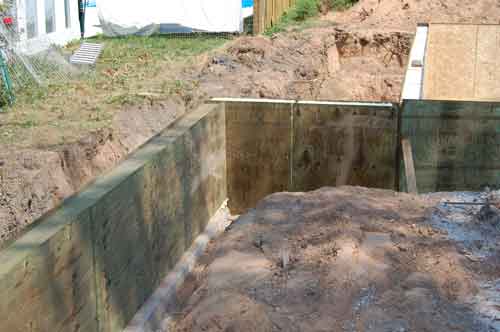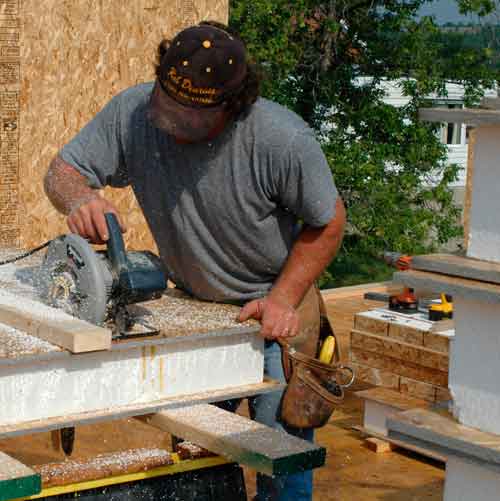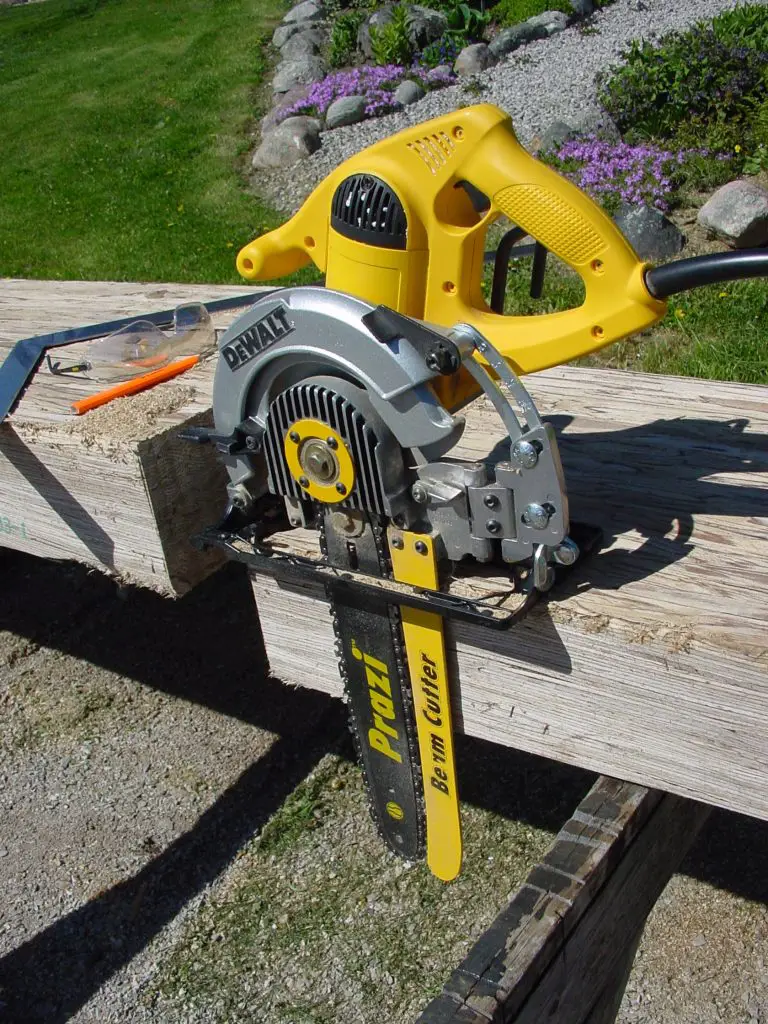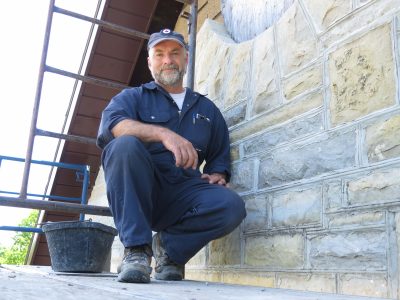Warm, dry and easily-constructed basements are every builder’s and homeowner’s dream, and even though pressure-treated structural insulated panels (SIPs) are a wood-based building material that can make this happen, you probably need convincing to use wood and not masonry for a foundation. And why wouldn’t you be skeptical?
- Reading time = 7 minutes
- Video Watch Time = 5 minutes
On the surface it doesn’t seem reasonable to rely on wood and foam alone to support a building below ground in the dirt, especially after builders have been making masonry-based foundations for centuries. But the fact is, one specific type of wood foundation made with structural insulated panels (SIPs) is a mature and proven technology. Pressure-treated wood foundations (PWFs) have been code-approved in one form or another since 1967, and the SIPs version of PWFs make especially good sense given the rising expectations homeowners have for warm, dry, inviting basement spaces. Even if you’re not looking to build anything right now, you might find the details of all this interesting.

What Are SIPs?
The acronym SIPs stands for structural insulated panels, and they’re a code-approved building system that replaces stud frame walls with factory-glued sandwiches made of foam (typically expanded polystyrene foam) in the middle, and sheet goods (such as plywood or OSB) front and back. Above-ground SIPs are usually made with 7/16”-thick OSB on both faces, while foundation SIPs are made with 1/2”-thick pressure-treated plywood on the exterior side with OSB on the inside. In both cases it’s the strength and rigidity of the glue bond between foam and wood that makes SIP buildings very strong indeed – about 300% stronger than equivalent stud frame structures. A typical 4-foot wide SIP can support about 30,000 lbs of downward load. As good as a SIPs foundation sounds on the surface, it’s natural to expect answers to key technical questions before trusting any project to such a seemingly unconventional, masonry-free foundation system.
Will SIPs Foundations Last?

Yes, SIPs will last. The substances used to treat foundation lumber are either chromated copper arsenate (CCA) or alkaline copper quaternary (ACQ), impregnated into the wood at rates much higher than regular pressure treated lumber for above ground use. Pressure treatment levels are expressed in pounds of preservative chemical infused per cubic foot of wood, and typical pressure treated lumber usually has a rating of 0.25 to 0.4 lbs. per cubic foot. Foundation-grade wood, by contrast, has a minimum treatment level of 0.60 lbs. per cubic foot.
The adhesive used to bond foam to plywood for a SIP assembly is a formaldehyde-free, structural urethane adhesive. And while it’s true that the adhesive used to bond the layers of wood for plywood used for all types of house construction do emit small amounts of formaldehyde (typically in the 0.1 parts per million range) it’s an insignificant amount. By comparison, the human body normally contains about 3 ppm formaldehyde. CSA, NFPA and the Southern Pine Council have all tested and approved pressure-treated wood foundations, both for safety and strength.
How Do You Work With Pressure-Treated SIPs?
At the end of this article you’ll find a video I made about SIPs in general, and the same general construction techniques apply to SIPs foundations. They cost about as much as a poured concrete foundation, but SIPs never crack. SIPs can be assembled at any time of the year without special trades, though construction techniques are different than for wood framing.
The bottom ends of SIPs straddle pressure-treated 2x lumber that’s bolted to the top of the footing. Corrosion resistant fasteners driven through the sheet material on both sides of the SIPs sinks into the lumber, locking the wall plumb. I’ve built SIPs building several times and it’s a surprisingly solid way to secure walls, with more strength added later as the floor structure is built. In fact, if you don’t get the panels perfectly plumb before anchoring the bottom ends, forget plumbing them afterwards. Once anchored, they don’t tilt either way.

When it comes time to erect a panel, start by applying spray foam to the recess along the bottom of one panel, then do the following.
- Tilt this panel upright onto the bottom plate, plumb it, then lock the panel vertically by driving fasteners through the sheet material along the bottom and into the bottom plate fastened to the footing.
- Install a pressure treated wooden spline into one recessed panel edge using more foam and fasteners, then foam the next panel and tilt it upright. Since panel edges interlock, you won’t be able to tilt this second panel up in exactly the final position. Use a 12 lbs. sledge hammer and scrap wood to pound the panel over sideways once it’s straddling the bottom plate, until the grooves interlock over the spline.
- Fill the cavity in the top of the panels with a double top plate once all panels are up. Most panels will be used uncut, so work goes fast. It takes just one or two days to assemble all foundation panels on top of an existing footing.

Some panels will need to be cut to create window and possibly door openings, and that’s where two specialized tools come in. A Prazi beam cutter is the power tool of choice for cutting SIPs to size. It’s a kind of chainsaw bar made to bolt to an electric circular saw. Depth of cut is sufficient for working with the thickest SIPs, and the tool can be set to cut angles, too. You can see my Prazi beam cutter below, mounted on a DEWALT circular saw.

It’s sometimes necessary to re-establish the factory recessed edges on SIPs after sawing, and an electric hot knife is the thing to use. It’s a hand-held tool with a rigid, high-resistance wire that melts foam, allowing a swath to be removed to recreate the recess. The slow operation of hot knives is the limiting factor in SIPs construction speeds these days, especially during cold or wet weather. You’ll get faster results if you pre-slice the joints along each side of an edge using a utility knife. That’s a hot knife you can see below.
Click below for a video tour of SIPs technology. It’s used both for above-ground and below-ground applications.
Complete the foundation walls by protecting outside surfaces with waterproof membrane leading all the way down to the footings. Unlike concrete foundation walls, SIPs foundations are back filled with clean crushed stone, a full 12” out from the wall from grade level leading directly down to weeping tiles below the footings. This channels surface water downwards, then away from the structure. The SIPs will probably never get wet at all.
What Are Drawbacks of SIPs?
No building material is perfect, and this applies to pressure-treated foundation SIPs, too. In the event of a deep, catastrophic water leak that remains undrained for days inside the basement, the interior OSB will swell. Tests done on flooded SIP foundations like this show that they’re still strong enough, but who wants swollen OSB? Also, since all types of pressure-treated wood foundations are new to many homeowners, skepticism may affect resale housing values. You also may have trouble finding someone willing to work with SIPs, but probably not. I know many contractors who have never worked with SIPs before, but were efficient and effective building with them after a little research.
Pressure-treated wood foundation SIPs do make it faster and easier to build basements and frost walls, but like most kinds of progress it takes time and information for people to see beyond the usual way things have always been done. And while this is especially true in the construction business, things are changing even here, too.
 How did you like this article and video? I hope it proved valuable to you. Please consider helping me cover the cost of producing content and publishing it. The “buy me a coffee” button below is a safe, fast and simple way to contribute. A big thank you to the loyal group of supporters who have been helping me.
How did you like this article and video? I hope it proved valuable to you. Please consider helping me cover the cost of producing content and publishing it. The “buy me a coffee” button below is a safe, fast and simple way to contribute. A big thank you to the loyal group of supporters who have been helping me.
– Steve Maxwell


